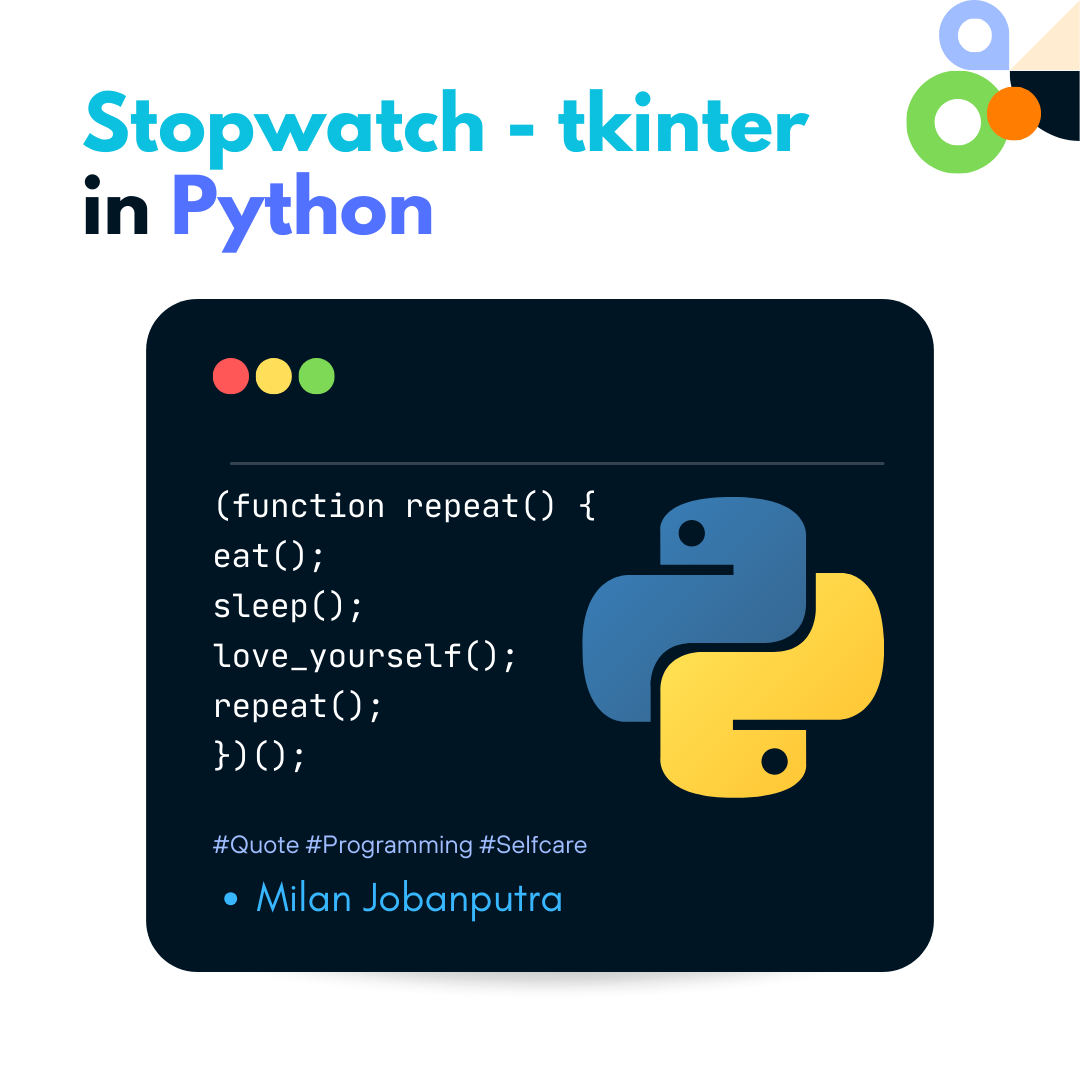Here’s a simple stopwatch program in Python using the tkinter library for the GUI:
This program uses the tkinter library to create a simple GUI. The Thread class is used to run the stopwatch in a separate thread so that it doesn’t block the main GUI thread.
The time.sleep(1) is used to update the stopwatch every second. The displayed time is formatted using the format_time method.
import tkinter as tk
from datetime import datetime
from threading import Thread
import time
class StopwatchApp:
def __init__(self, root):
self.root = root
self.root.title("Stopwatch")
self.seconds = 0
self.running = False
self.display_var = tk.StringVar()
self.display_var.set("00:00:00")
self.display = tk.Label(root, textvariable=self.display_var, font=("Arial", 20))
self.display.pack(pady=20)
self.start_button = tk.Button(root, text="Start", command=self.start_stopwatch)
self.start_button.pack(side=tk.LEFT, padx=10)
self.pause_button = tk.Button(root, text="Pause", command=self.pause_stopwatch)
self.pause_button.pack(side=tk.LEFT, padx=10)
self.stop_button = tk.Button(root, text="Stop", command=self.stop_stopwatch)
self.stop_button.pack(side=tk.LEFT, padx=10)
self.update_display()
def start_stopwatch(self):
if not self.running:
self.running = True
self.stopwatch_thread = Thread(target=self.update_stopwatch)
self.stopwatch_thread.start()
def pause_stopwatch(self):
self.running = False
def stop_stopwatch(self):
self.running = False
self.seconds = 0
self.update_display()
def update_stopwatch(self):
while self.running:
time.sleep(1)
self.seconds += 1
self.update_display()
def update_display(self):
formatted_time = self.format_time()
self.display_var.set(formatted_time)
def format_time(self):
minutes, seconds = divmod(self.seconds, 60)
hours, minutes = divmod(minutes, 60)
return f"{hours:02}:{minutes:02}:{seconds:02}"
if __name__ == "__main__":
root = tk.Tk()
app = StopwatchApp(root)
root.mainloop()

